Familiar Smartphone Design
The Motorola P30 looks so familiar. I think this tweet sums it up:
Jony Ive, Chief Design Officer for the entire smartphone industry. pic.twitter.com/wxBXjNwFV8
— Neil Cybart (@neilcybart) August 14, 2018
The Motorola P30 looks so familiar. I think this tweet sums it up:
Jony Ive, Chief Design Officer for the entire smartphone industry. pic.twitter.com/wxBXjNwFV8
— Neil Cybart (@neilcybart) August 14, 2018
I’m quickly coming up on my two year anniversary at my day job. I’ve learned quite a lot in my professional experience as an iOS developer. But one unfortunate side effect of doing something that I love during the day: it’s hard to find the time and motivation needed to work on my app projects, even when the desire is there.
For developers who work on their own projects as full time or even as a “side job/hobby”, how do you manage time? I’ve become a bit of a workaholic and never give myself much time to just take a few days off and do other things like read or play games.
— Maximilian (@maxhasadhd) February 14, 2018
Max’s tweet was originally about trying to work too much. But I felt inspired to address some of the issues as to why I feel I don’t work enough, whether or not that’s true.
Here are a few of the issues I’ve found myself facing:
Before I had my current job, I did a lot of my development work on the side. Sometimes I even found some time during the lulls of the day to get a little bit of work done. But now, I have to try other things.
A few things I’ve ultimately realized:
Overall, I’m not getting as much done with my side app projects as I’d like. But as I am a developer during the day, that takes a lot of my developer energy. And lastly, I have to balance my interest in side projects with my family, which has my ultimate priority. Thankfully, it’s kept me from being a workaholic. ((As much as I love to work.))
In my case, I just have to accept the reality: I can’t do what I once could. But that’s okay. ((I started this blog post shortly after Max’s initial tweet, and that was 4 days ago. Shows you how my time is allocated.))
In March, alongside a few hardware announcements, Apple also unveiled a new media sharing app called Clips. Clips was released today. Reviews seem mixed. But I’m not here to talk to you about Clips.
iOS 10.3 was released to a vast majority of iOS devices on March 27. It was a huge behind-the-scenes update that migrated iOS devices to Apple’s new file system. But I’m not here to talk to you about iOS 10.3.
What I am here to talk to you about is 32-bit app support. It’s definitely coming to an end. And this might affect some apps you like using. For me, some of my favorite games fall into this category. Want to see which of your apps won’t work on future iOS versions? Head to Settings > General > About > Applications to see the list.
You might’ve gotten a glimpse of this even without going to the Settings app. One other change in iOS 10.3 noted by people before and after release: Apps not compiled for 64-bit present an alert to the user upon launch. This alert says that the app in question will not work with future versions of iOS.
Now, why did I mention Clips earlier? Because Clips has some notable requirements. Sure, it requires iOS 10.3. That’s the latest OS release, and its no surprise that Apple will target the latest release with its latest apps. But the hardware requirements don’t include all devices running iOS 10.3. Specifically, Clips only works on 64-bit devices. Don’t believe me? Check the bottom of the Clips site and try to find a 32-bit device in the list of supported devices. You won’t find any.
Another big tip: iOS 10.3.2 is available for developers to test. It is only available for 64-bit devices.
The writing is clearly on the wall: 32-bit apps will soon be unsupported in iOS. But while some think iOS 11 will be the big cutoff, it may be sooner than most people realize. If you see your favorite apps in that list in your Settings app, consider contacting the developers of those applications. Urge them to update their apps.
I know I don’t want to lose my favorite games.
This week, Apple announced a few new or updated products via press release. One of those was a brand new iPad model. Known only as iPad, it’s an update to the 9.7-inch iPad model but staying below the new Pro line in terms of functionality.
There’s been some confusion as to the iPad’s name, as well as Apple’s approach to its design and price. But if we take a moment to analyze its name, I think we can put the rest of the details into place.
Apple is calling this simply iPad. Specifically, it shows up as iPad (5th Generation) ((For instance, in the list of supported devices for the new Clips app.)) on Apple’s site, which is leading to issues on Wikipedia, as the iPad Air was unofficially known as the 5th generation iPad. Why is Apple calling it the 5th generation iPad?
Ultimately, I think we can consider the iPad itself having ended as a product line with the 4th generation iPad. When a new 9.7-inch iPad model debuted in 2013, it came with a new name: the iPad Air. This began a new line of Air model iPads. These models kept pushing the envelope forward in terms of weight, thinness, and power. I still think the iPad Air 2 is a very capable iPad, even if Apple no longer advertises it on their website.
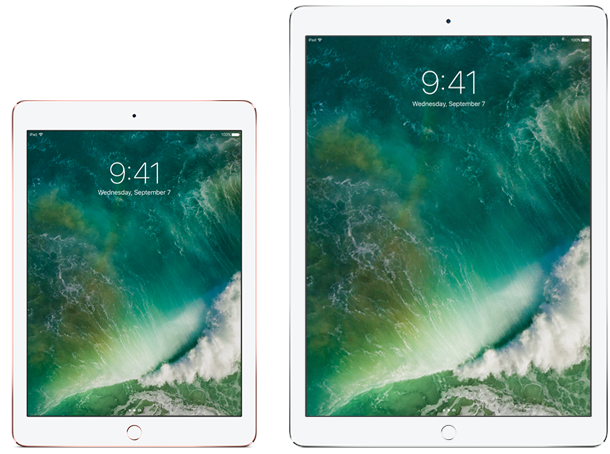
Apple’s two iPad Pro models
That said, the iPad Pro line is yet another new line of iPads. The fact that the iPad Pro 9.7-inch model happens to have identical dimensions to the iPad Air 2 just shows the evolution of that sleek, powerful design.
With the Pro moniker, Apple is clearly targeting the iPad Pro towards those wanting to do more with their iPad. Looking to do serious work? Here’s an iPad that also supports a convenient Smart Keyboard and state-of-the-art Apple Pencil.
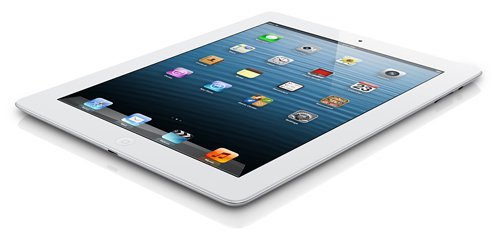
The iPad (4th Generation), the predecessor to the iPad (5th Generation)
What about the consumer? That’s where the iPad (5th Generation) comes in. This iPad isn’t a new Air model. This isn’t related to the Pro models at all. Instead, this is the follow-up to the iPad 4. As such, it’s able to get away with a few things.
First, we can revert to the design of the iPad Air. Sure, it means the iPad is thicker than the Air 2. But it still is a great size and, more importantly, is still close to 1 pound in weight. That makes this iPad one you can hold for a longer period of time than the iPad 4 (or older).
This older design also shows up when we look at the various technologies used in the iPad (5th Generation). The display is still of Retina quality, but it lacks the anti-reflective material that’s built into the latest iPads. We also see Apple resorting to the older antenna bands for the LTE models.
However, despite having some older technologies in this new model, they can also throw in some very capable internals. The A9 chip, while technically over a year old, is still more powerful than what’s in any other consumer-targeted iPad model. This puts it on par with the iPhone SE, another iOS device considered to be for those looking at a more price-friendly option.
This leads me to the second point: price. Because Apple is using a mix of older technologies and designs along with semi-newer chipsets (which, as a volume purchase, likely cost less the more Apple integrates them into products), they can also release this iPad at an amazing price: $329 for 32GB. That’s the lowest any new 9.7-inch iPad model has ever sold for.
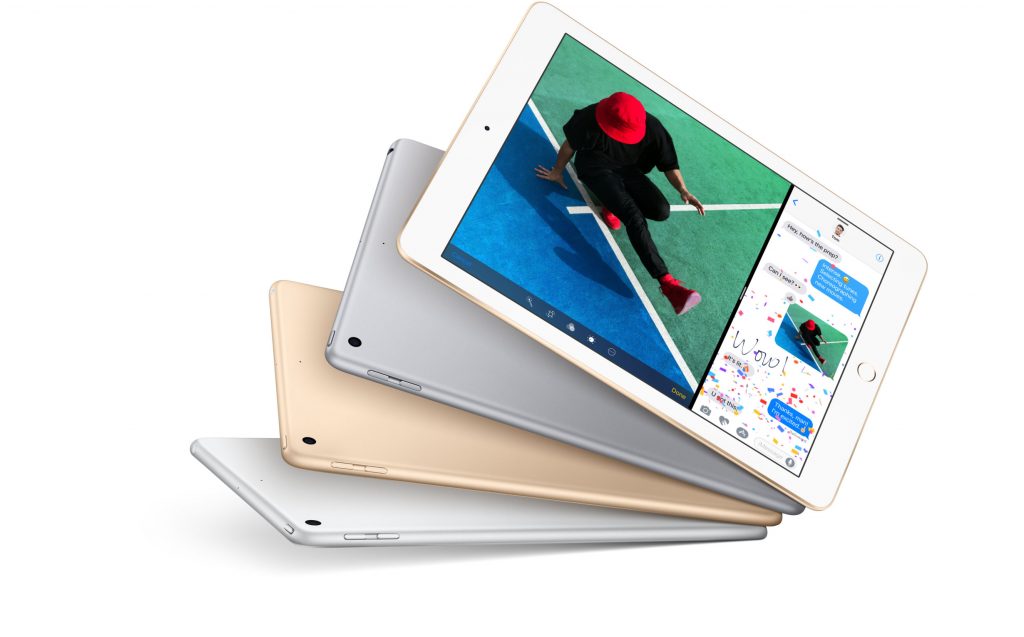
The lower price leads me to two conclusions:
Overall, this new iPad will be a very positive thing for Apple. The lower price should bring in new iPad owners, as well as move those with anything older than an iPad Air 2 to upgrade.
This post originally appeared at NotedTech on 5 September 2016.
Years ago, I remember hearing the term ‘planned obsolescence’ being thrown around. The context was typically surrounding Apple and their upgrade cycle. The idea was that Apple would not support their devices for more than two years, forcing users to upgrade to continue to receive support.
If you look at the first few iOS devices, it could be easy to see that. The original iPhone receive its last software update, iPhone OS 3.1.3, in February 2010, just over two and a half years of availability. It didn’t stand a chance of receiving iOS 4. In fact, if you look at the history of iOS releases in general, each has typically left behind some device or another.
Yet, despite older devices eventually having to fall by the wayside, something interesting began happening with the iPad 2.

In March 2011, Apple unveiled the iPad 2. It was thinner than the original iPad, included both a front and rear facing camera, and packed the Apple designed A5 chip. While not incredibly more powerful than iOS devices sold in the previous year, the iPad 2 currently holds an incredible distinction: it supported six iOS releases! Only now, five years after introduction, is Apple letting the A5-family go. It launched with iOS 4.3.5 and will end with iOS 9.3.5, the most current stable release of iOS.
iOS 9 stands as a unique iOS release: it is the only first major iOS version to not drop support for a device. In other words, all iOS 8 capable devices were able to get iOS 9. Given these recent trends, it’s likely that a good number of iOS devices, especially the 64-bit ones running the A7 chip or newer, will be supported by iOS releases for years to come.
That all said, I’m sure any iPad 2 owner can tell you: The device ran smoothest with iOS 4 and slowest with iOS 9. But given that each release adds new features of some kind, it’s only an eventuality that hardware cannot keep up with the software running on it. But to support major OS releases for six years is quite a lot, at least in the mobile space. Apple, thankfully, has the advantage of controlling both the hardware and software that goes into their devices, allowing them to tweak and manage every aspect. Because of the limited hardware options, it’s also easy for them to maintain support for older devices if need be.
By comparison, take a look at the recent news regarding Android devices running certain Qualcomm chipsets:
Not all of the big Android phone makers have announced their plans for the Nougat update [Android’s latest OS release], but if you look at Sony’s and Google’s and HTC’s official lists (as well as the supplemental lists being published by some carriers), you’ll notice they all have one big thing in common. None of the phones are more than a year or two old.
After doing some digging and talking to some people, we can say that it will be either very difficult if not completely impossible for any phone that uses Qualcomm’s Snapdragon 800 or 801 to get an official, Google-sanctioned Nougat update (including the Z3). And that’s a pretty big deal, since those two chips powered practically every single Android flagship sold from late 2013 until late 2014 and a few more recent devices to boot.
This situation has far-reaching implications for the Android ecosystem. And while it can be tempting to lay the blame at the feet of any one company—Google for creating this update mess in the first place, Qualcomm for failing to support older chipsets, and the phone makers for failing to keep up with new software—it’s really kind of everybody’s fault.
While the Android ecosystem allows for a great amount of variety and customization, it also can lead to situations like this. In this case, it looks likely that Qualcomm themselves have decided to stop supporting that chipset. Given that Android updates require sign-offs from multiple parties, just one can provide a roadblock.
This sets off a vicious cycle—OEMs usually don’t update their phones for more than a year or two, so chipmakers don’t worry about supporting their chipsets for more than a year or two, so OEMs can’t update their phones for more than a year or two even if they want to. It turns the 18-month minimum target that Google has been silently pushing for the last half-decade into less of a “minimum” and more of a “best-case scenario.” And people who don’t buy brand-new phones the day they come out are even worse off, since most of these update timelines are driven by launch date and not by the date the phones were taken off the market.
This isn’t the first time we’ve seen a premium or flagship handset losing support before the intended date. But for smartphone users, does the idea of an 18-month support window make you feel comfortable? I know I wouldn’t like that.
Google’s (soon to be rebranded) Nexus line might be the best supported for Android updates, but I wonder if Google will do more to tighten down the Android experience on their own devices. Will they move to take more control of the entire experience and limit situations like this? Can that even be done? One thing’s for sure: I doubt Google intended for Nougat to be limited in release. Yet, through no direct fault of their own, this is the current situation.
This post originally appeared in NotedTech on 31 August 2016.
In 2014, Apple announced the Apple Watch. While many were expecting a shrunken iPhone on your wrist, Apple instead focused on a new experience. The Digital Crown, for instance, let users scroll their content without blocking most of the screen with their finger. To add further interactivity to apps, they also introduced something new: Force Touch.
In 2015, Apple added Force touch to the Mac lineup with the new MacBook, updated MacBook Pros, and the new Magic Trackpad 2. Later that year, the iPhone 6s was launched with a Force Touch capable display, branded on iOS devices as 3D Touch.
On each platform, the concept of Force Touch or 3D Touch acts a bit differently. For instance, with watchOS, Force Touch is really a required element to provide more interactive options without sacrificing screen space. On the Mac, default implementation seems to duplicate 3-finger taps while providing a few useful improvements, such as making use of the Taptic engine to provide feedback to the user’s finger.
On iOS, at least with iOS 9, the introduction of 3D Touch seemed like a gimmick to some. Live Photos required 3D Touch to move, yet can be activated by a long press on older devices. On the home screen, a hard press shows app shortcuts. And the concept of peeking and popping into content lets user quickly glance at information before committing to loading a certain view.
On Android, some said that the idea of detecting pressure on the screen was an old concept. Yet, looking at what was introduced early in the Android SDK showed those functions to be based more on the size of the tap than the actual pressure. In other words, it wasn’t truly making use of a pressure sensitive display.
That’s not to say that no Android device has a pressure sensitive display. Huawei beat the iPhone 6s to market with the Mate S and its pressure sensitive display. Yet, despite launch in 2015, we have yet to see many major flagship Android devices come with that feature. Even the Samsung Galaxy S7 and Galaxy Note 7 devices this year fail to include that functionality.
Following the introduction of the iPhone 6s, word began to spread of Android manufacturers coming out with their own displays. The recently released Android N was said to include support for their own implementation of 3D Touch, but the feature has now been reportedly moved to a maintenance update to the OS. Do Google, Samsung, and other Android manufacturers just think this is a useless gimmick?
If we look at Apple, however, we see a different picture. iOS 10 seems made for 3D Touch. The lock screen experience, and notifications in particular, truly benefit from 3D Touch. Having been running the iOS 10 developer beta on my iPhone 6s, I can say that my use of 3D Touch has greatly improved over iOS 9. In fact, when I switch to a non-3D Touch device, such as my iPad Air 2 or an iPhone 6 Plus used for app testing at work, I find myself trying to hard press the screen to perform certain actions.
While the implementation isn’t complete on the Mac, I fully suspect Apple will be making further use of Force/3D Touch on all of its devices. In fact, I would be surprised if this year’s iPad updates didn’t include some level of 3D Touch. And the rumored MacBook Pro update? It’ll definitely have a Force Trackpad. But in the coming months and years, I’d suspect Apple will add more 3D interactions to macOS.
All of this shows something that Apple excels at: taking their control of the hardware and software of the iPhone to make a unique experience. If Android supports pressure touch in the future, not all manufacturers will. It’ll introduce another level of fragmentation to their ecosystem. Yet, for Apple, adding this capability to their line is no trouble at all, and I’m convinced that the use of 3D Touch will only improve with each generation of Apple’s operating systems from now on.
This post originally appeared on NotedTech on 12 June 2016.
With just one day until WWDC 2016 begins, I wanted to do something different. While everyone is making guesses and wishlists for this year, I wanted to look back at recent WWDC keynotes, their announcements, and what stood out for me.

While much has happened since 2010, there is a lot that still stands out to me. While not the last WWDC keynote by Steve Jobs, I think his performance here was better than the following year. Personally, I see this being related to his health, as he seems more frail in 2011. Overall, Steve here was well composed and was able to throw in his fair share of jokes among various announcements. He was a natural on stage. While no replacement, I think Craig Federighi is the best Apple currently has when it comes to bringing back Steve’s flare.
Among other things this keynote is known for, the first is the introduction of the iPhone 4. It was the last time a new iPhone would grace the WWDC keynote. The iPhone 4 was a first in a few areas for Apple: An LED flash, a front facing camera, and the Retina display. We take all of that for granted now, but none of that existed on previous iPhones at the time.
Of course, one thing we’re quite used to now are leaks and rumors. Unfortunately for Apple, a test iPhone 4 was also leaked before the announcement, leading to the press having clear shots of the final device. But Steve handled it well on stage: “Stop me if you’ve already seen this.”
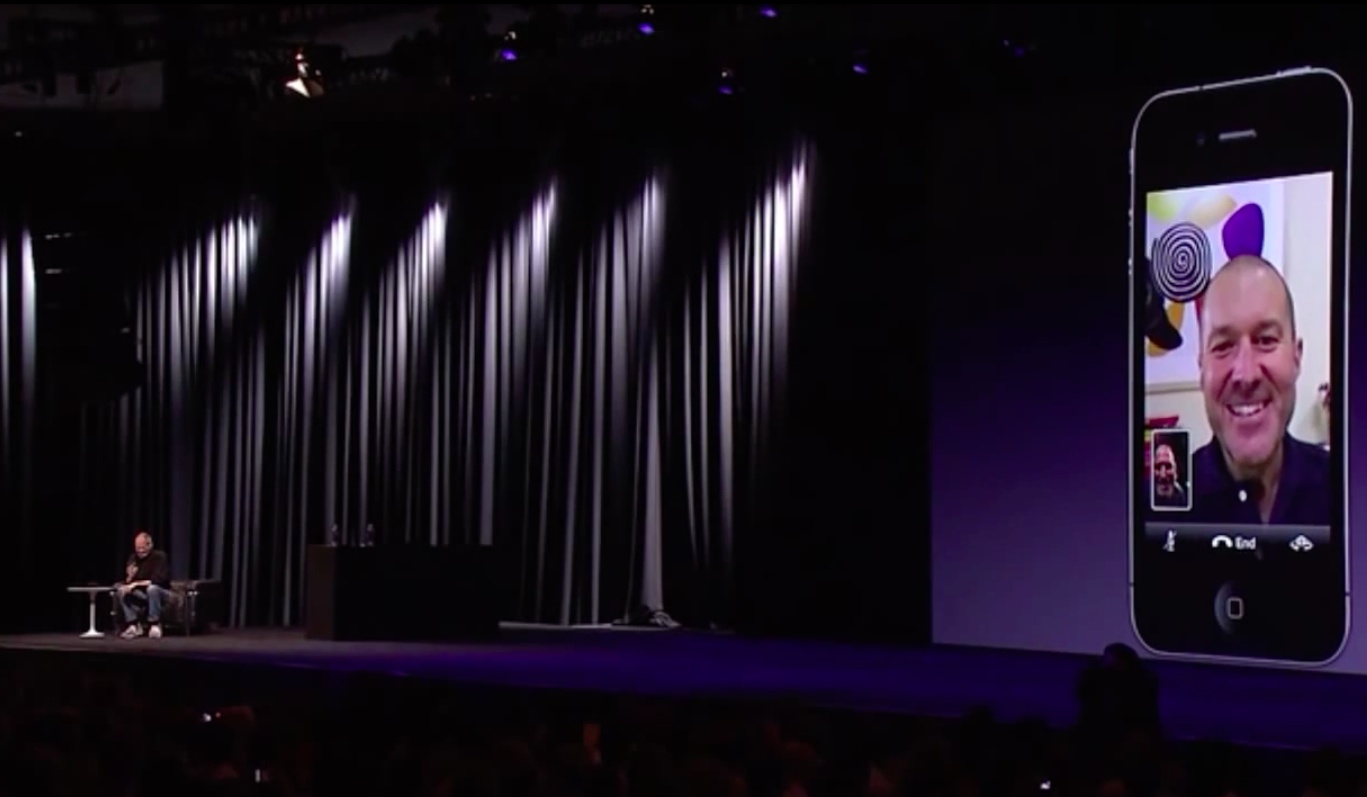
Alongside the iPhone 4 came something else that a lot of Apple users are likely quite familiar with: FaceTime. While not the first video communication system, it became the easiest way to start a video conversation with another Apple user. Since the initial introduction, we’ve seen FaceTime come to all of Apple’s mobile devices, and FaceTime Audio makes for a clear alternative to a standard phone call, especially in a WiFi-only environment.
Overall, this keynote stands out to me as one of Steve’s best. Between dealing with the announcement of a leaked product, jokes about whether or not Apple would approve their own apps, and handling WiFi problems in the middle of a demo, Steve still gave an entertaining, informative, and captivating presentation. (Well, all but the iAd demo. RIP iAds.)
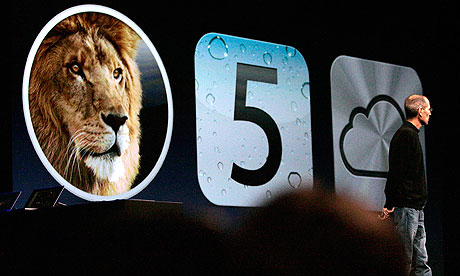
The iPhone was 4 years old; the iPad was just over 1. Despite the relatively short lives of those devices, there were plenty of technologies to bring back to their parent platform. The 2011 keynote saw a 4th preview of OS X Lion, something Apple had been beta testing for months. This brought a few technologies and improvements from iOS, including more iOS-styled interfaces and FaceTime. It also was the first OS X update distributed exclusively through the new Mac App Store.

It also was the year we saw the Mac demoted. Initially, the Mac was the hub of your digital life. Now, with the introduction of iCloud, the Mac was to be a device in the same manner as an iPhone or iPad. While some would say Apple has a ways to go on delivering that vision, it all began with 2011.
The iCloud of five years ago was missing a few of the features we’ve come to love recently. But while not having features like iCloud Drive, iCloud Photo Library, or iCloud Music Library, it did introduce a few useful features to Apple users. Calendar, Contact, and Note syncing quickly made those apps much more useful. iCloud Backup made iTunes a little less necessary for device owners. And iTunes Match, while not necessarily an iCloud feature, provided an option to access your music on devices without syncing with your Mac or PC.
But as great as that all is, iOS 5’s big feature to me, besides iCloud support and Notification Center, was iMessages. Looking back, it’s hard for me to imagine now having iMessages. Yet, five years ago, it was just being announced. This feature would lead to the iPhone, iPad, and iPod Touch being more useful as social devices. Suddenly, someone could message a friend with just an Apple ID and WiFi. Gone were the requirements of needing a cellular connection or a phone number to message others.
As this was Steve’s last WWDC keynote, it also is the last time we saw Apple’s CEO delivering the majority of the event.

From the beginning, iOS development was lead by Scott Forstall. If WWDC 2011 was Steve Jobs’ last, 2012 was the last for Forstall, though no one could have known that at the time.
Ultimately, Tim Cook’s Apple was to be one based on cooperation and collaboration. While we don’t know all of the inner workings at Apple, some anonymous reports made out Forstall to be a polarizing force. Steve Jobs was able to hold onto his reins, but after Jobs’ death, he just couldn’t fit into the culture Cook was putting together.
One item in particular that Forstall presented on stage was Apple’s new Maps app in iOS 6. From the start, some users had issues with it. Google Maps, which had been on iOS up until that point, had been around longer than Apple’s service, leaving Apple trying to catch up. But even though it was inferior to some, the new service also brought turn-by-turn navigation natively to the iPhone. That, along with Flyover, made Apple Maps a shiny new application. Forstall’s pride is clearly seen as he demos it.
iOS 6 also brought Passbook, one of the initial steps ultimately leading to Apple Pay with iOS 8. Looking back, it’s possible to see Apple working on new ideas one piece at a time. Here, Passbook provided a way to put cards and codes into a single app. Next year, with the iPhone 5s, Apple would introduce a required piece of hardware side in the form of Touch ID.
On the Mac, OS X Mountain Lion brought Notification Center, iMessages, Game Center, and Notes. It was pretty clear that iOS was starting to lead when it came to new features. The Mac would eventually get iOS apps and features once they were created to fit the Mac’s interface mechanism.

And speaking of the Mac, WWDC 2012 was the birth of Retina on the Mac. The MacBook Pro with Retina started with only a 15-inch configuration and started at a price higher than the existing MacBook Pro models. But it also showed something very clear: Retina was the only way to go with a display. The new model also took some pointers from the MacBook Air in terms of removing older technologies and moving parts. Gone were the SuperDrive and spinning hard drive. Everything was flash, solid state, and ultimately made for a sleeker, more powerful MacBook Pro. In the end, it was the first of many transitions for Apple’s Mac line. And after having moved to solid state and Retina, I’ll never go back.
As iCloud began to mature, it also was starting to become clear that the iOS and OS X platforms could start doing more together. Things weren’t perfect yet (and still aren’t), but it was beginning to seem like there were more and more benefits to working across all of Apple’s devices.

Many months before WWDC 2013, rumors were flying around the various Apple blogs: iOS 7 was going to be a major redesign. Gone were the shadows, gradients, and textures of iOS 6. Everything was going to be flat.
While somewhat true, there was more to the story. Sure, plenty of textures disappeared with iOS 7, but they also disappeared from many of the apps found in OS X. The first non-cat release, Mavericks, boasted simpler UI, though it still reflected the window chrome found since Snow Leopard. Instead of seeing a calendar that might as well have been ripped up from someone’s desk, it was a clean looking Mac app.

OS X Mavericks also brought efficiency and performance improvements. While a focus of many OS updates, the particular focus showed that Apple wanted users to get the most out of their Mac, even if it was worth upgrading.
Mavericks also brought a price change: free. While Microsoft has offered free Windows 10 updates for now, they will eventually go back to a paid model. But Apple’s approach, likely offset by them making money on hardware and not software, means they can provide these updates to as many users as possible.
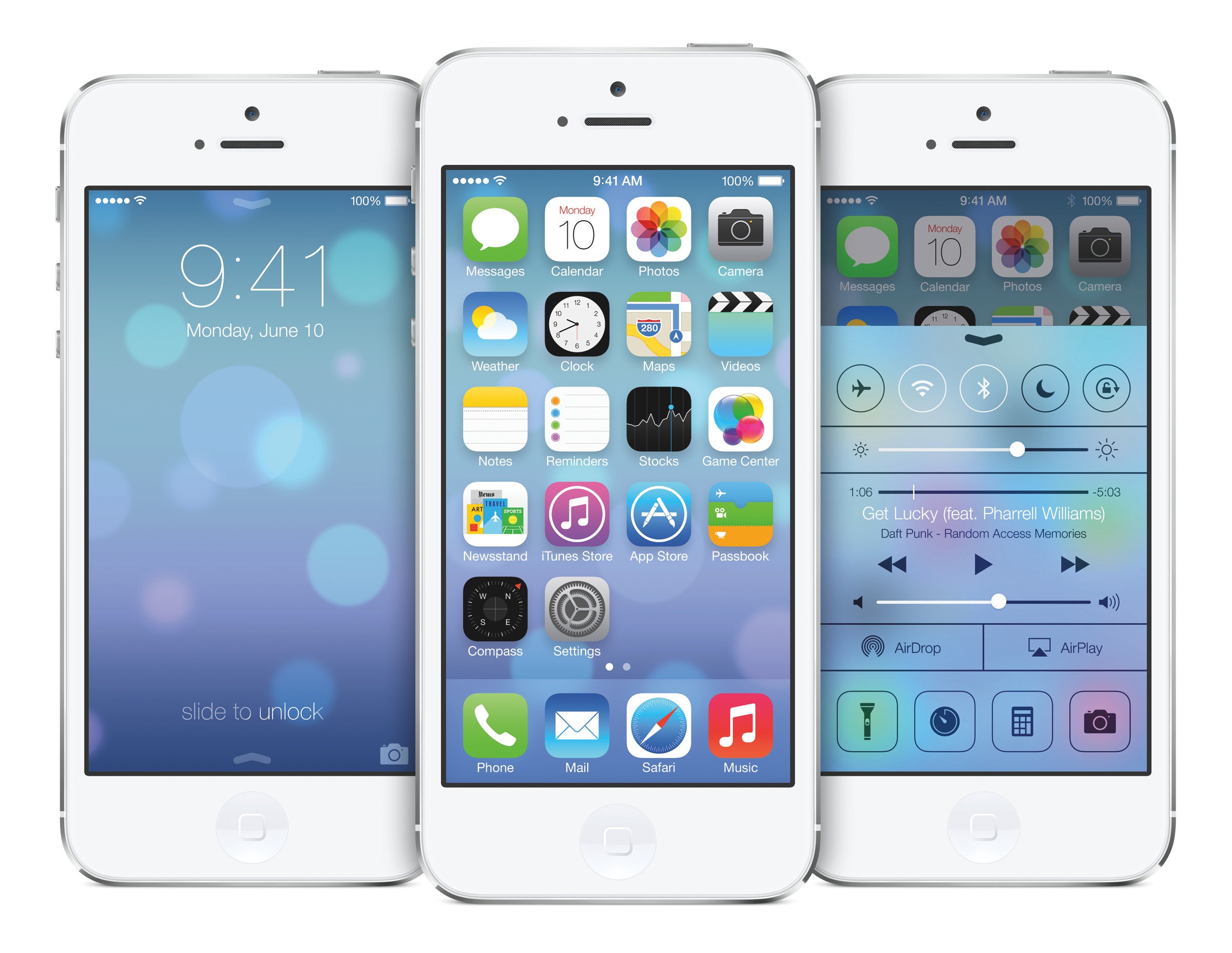
The biggest news of the keynote, of course, was iOS 7. While things seemed flatter, a lot of it ultimately seemed to be shaping up future UI for Apple. Of course, this wasn’t clear at the time. But looking back, the changes in iOS 7 ultimately lead to Apple changing OS X’s appearance in 2014, allowed for the dark but familiar UI for the Apple Watch, and brought similar changes to the Apple TV with tvOS.
I believe iOS 7 was more than just a quick redesign of the OS. I think it was purposeful planning for the future. Apple knew they wanted to go into a new direction with the Apple Watch and likely had some plans for the new Apple TV. They also were planning larger iPhones for the following year. All of that would benefit from ‘simplifying’ the operating system’s appearance.
And speaking of bringing things together…
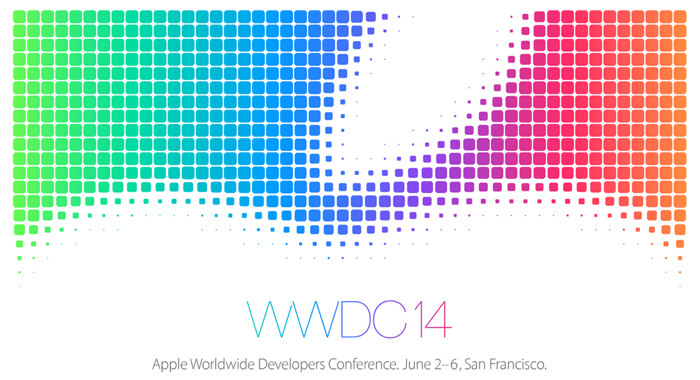
The first iPhone was famous for ‘running OS X’. While true in a certain fashion, ultimately iOS (initially “iPhone OS”) was an offshoot of OS X running on a different processor architecture. Thus, while having similar roots, for several years both were developing their own features. In 2014, both were brought up to a level that let them work almost seamlessly with each other.
To me, the 2014 WWDC keynote is the best with regards to useful user and developer features and announcements. There are just so many wonderful things that were announced that year:
Even after announcing all of those great features, Apple still had more to give to developers with the introduction of Swift, their new programming language.

As an Apple user, this was my favorite keynote. OS X Yosemite and iOS 8 truly made it worth living entirely in the Apple ecosystem. It always gives me a good feeling when I can show off features like AirDrop, Handoff, and Continuity to owners of Apple products.
As a developer, both iOS extensions and Swift were exciting. And given that WWDC is a developer conference, it makes sense that Apple would focus on software and things directly pertaining to developers and their apps. Apple would never make us sit through an awkward half hour of a non-developer related service at WWDC…
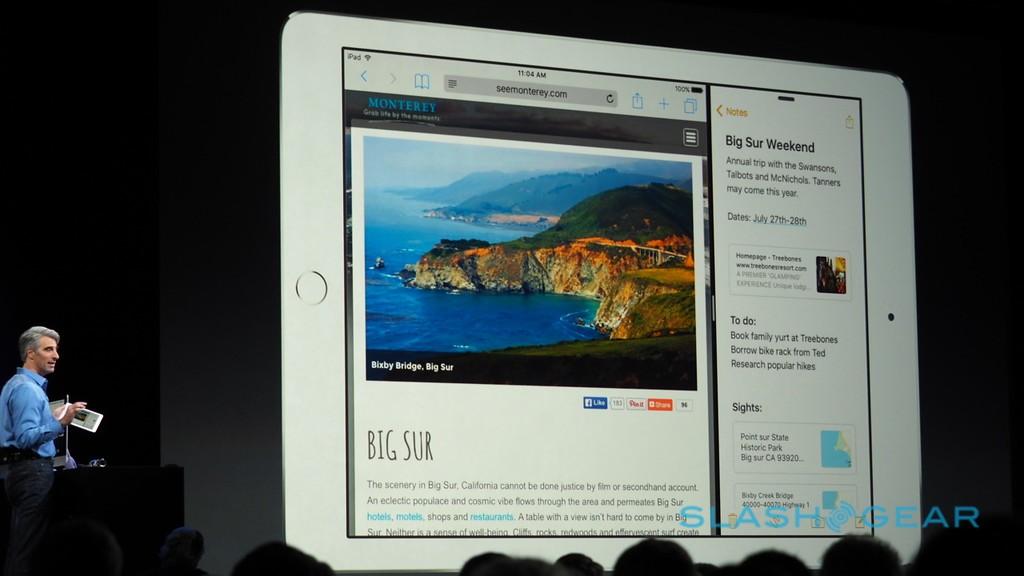
Okay, maybe Apple would make a rather long intro for something not related to developers and software at WWDC.
The big item in 2015, and the one that I use often, is iPad multitasking in iOS 9. Split View, Slide Over, and Picture-in-Picture made the iPad a more useful device. So long as an iPad has a 64-bit processor (A7 chip or newer), some form of multitasking is available.
While not as notable of a feature for some, OS X El Capitan also included split screen support for full screen apps. As someone that uses full screen apps constantly across multiple displays, this was a great feature.
Thankfully, the 2015 keynote ended after all of the software talk.
Okay, it didn’t.
Seriously, though, Apple Music seemed out of place for a developer conference. Still, Apple will make the most of their public events. And for a lot of people that I talk to, Apple Music is a great service. Me? I like my local music library, consisting of songs and albums I’ve accumulated since I was a teen. I’m not ready to trust my music needs to the cloud just yet.
So how will I remember 2016? As this isn’t a post about my wishlist or thoughts on rumors, I’ll leave this blank. Once WWDC 2016 is behind us, then I’ll go back and say exactly what my highlights are.
If there is anything on my “wishlist”, though, it is that this year’s event is as good as 2014. That’s my current favorite. Between new user features and developer enhancements, I thoroughly enjoyed it. I only hope I’ll feel the same after Monday morning.
This post originally appeared on NotedTech on 26 April 2016.
I remember being rather skeptical of Apple’s original marketing of the Apple Watch as “our most personal device ever”, but a year later I must say that it would be a hard case to make that something that has been physically attached to me for 83% of my life is anything other than personal.
Thankfully, David is someone that will dig into numbers. In this case, it’s seeing how many hours a day he’s worn his Apple Watch since first putting it on a year ago. I know I’d love to see what my numbers reveal. Since using Sleep++, I’m sure I’m in the 20+ hours a day category.
This post originally appeared on NotedTech on 12 November 2015.
Earlier this month on the OneDrive blog:
Since we started to roll out unlimited cloud storage to Office 365 consumer subscribers, a small number of users backed up numerous PCs and stored entire movie collections and DVR recordings. In some instances, this exceeded 75 TB per user or 14,000 times the average. Instead of focusing on extreme backup scenarios, we want to remain focused on delivering high-value productivity and collaboration experiences that benefit the majority of OneDrive users.
Here are the changes:
Looks like a few bad apples ruined it for the rest of the OneDrive user base. The new plans seem very similar to Apple’s iCloud pricing, which currently is: 5 GB free, 50 GB for $.99/month, 200 GB for $2.99/month, and 1TB for $9.99/month. If you’re new to cloud storage, it looks like the determining factor is which platform are you working with most: Apple’s or Microsoft’s?
Interestingly, Microsoft will seemingly just offer 2 options: 5 GB free, or the addition of 50 GB of storage for $1.99/month. If you want 1 TB, you’ll need an Office 365 subscription. That is, if you want an Office 365 subscription. I don’t know of many people that have one outside of a work created account.
This post originally appeared on NotedTech on 2 October 2015.
After a week with the iPhone 6s, I’ve been able to finally put together my early thoughts on it. There are plenty of good reviews out there, so I won’t go into every tech detail.
First, my typical buying habits: I’ll get a new iPhone every two years. My first iPhone was the 3GS, and I’ve been on the ’S-cycle’ ever since. The new design has been perfected, and the internal upgrades are typically more significant than with the new designs. Thus, my previous iPhone was the 5s.
Compared to what I had before, this new iPhone definitely is a wonderful device. There are a few areas that I especially appreciate.
First, the FaceTime camera. Living two time zones away from family, FaceTime has become a regular thing for us. The front facing FaceTime camera on the iPhone 6s is now a 5MP sensor. Both photos and videos are much higher quality than in previous iOS devices. Yes, it makes for great selfies. But it also makes for better video chats, too.
The iSight camera on the back is very important to many people. For me, with a ten-month old son, photos are something that happen all day, every day. Again, these are photos that get sent back to family. The jump to a 12MP camera, along with the usual ‘Apple refinements’, means we always have cute pictures for the grandparents.
Of course, the iPhone 6s also includes support for taking Live Photos. Shortly after coming home with our new iPhones, I tested this out with our son. The first Live Photo that I took is now my favorite Live Photo (thus far) and has been my wallpaper several times this past week. Being able to touch my screen and see him move and smile is one of the most pleasant experiences I’ve had with my new iPhone. This feature also is a big hit with our family (at least the family members who have updated to iOS 9). Instead of just seeing a still photo of their grandson, they can almost see the memory as we did. This alone is probably the best feature to come to the iPhone 6s.
One other new feature to the 6s is 3D Touch. Some have, incorrectly in my opinion, compared it to right click on the desktop. Others, typically Android users, like to say it’s analogous to a long press. Both actions give the impression of a junk folder of actions. When you right click on something on a computer, you don’t expect to do things quicker than a click or two, you expect to find additional options. And in iOS, that’s still true of things like a long press. 3D Touch, however, makes things simpler. For me, previewing links while in Mail, News, or Messages is wonderful for productivity. You can get a quick idea of what is there without needing to load the entire link, email, or article. If I want to head into something, I can press harder and pop into it. Otherwise, I can just peek my way through things. And unlike a long press, I don’t need to wait for this to kick in. I can just do a hard press and instantly get a peek into something. I think this interaction has a lot to offer iOS, especially as more apps take advantage of it. And I wouldn’t be surprised to see this hit iPad models next year.
All in all, I’m very happy with the iPhone 6s. Coming from the 5s, I’m still adjusting to the size difference. Most people probably got that out of their system last year with the release of the iPhone 6. Besides that, though, there’s everything to love and little to hate in Apple’s latest iPhone.